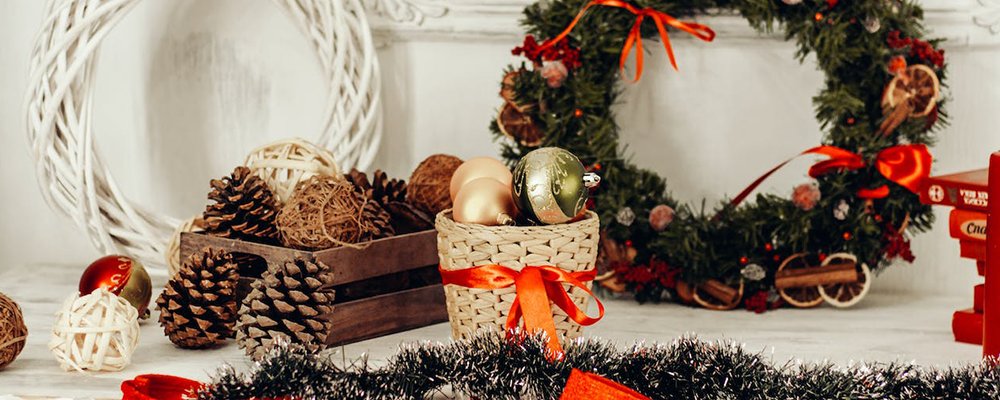Papa Noel, El Niño Jesus, and Babbo Natale are just a few of the names in different parts of the world that refer to the same Saint Nicholas. This saint, clad in red and white, epitomises the meaning and spirit of Christmas. Keep reading to learn about St. Nick legends and traditions in different parts of the world.
The History of Saint Nicholas
St. Nicholas has been one of the world's most popular non-biblical saints for hundreds of years. Born around 280 AD, St. Nick was a Greek Christian bishop living near Myra in Lycia, now modern-day Turkey.
Saint Nicholas was renowned for his gifts to people experiencing poverty. Legend has it that he helped three impoverished daughters of a local Christian by dropping a sack of gold through their window every night so they could avoid prostitution.
This saint was well known for his generosity, which lives on in traditions today. However, the real St. Nick most likely looked much different than his current image throughout the world. Rather than being a large man with a white beard, he was likely darker skinned, with dark eyes and silver hair.
Different St. Nicholas Traditions Around the World
Numerous comparisons have been made between Santa Claus and Odin, a prominent deity of the Germanic peoples, before their conversion to Christianity. Legend has it that Odin maintained two ravens that eavesdropped on people's chimneys to discern their behaviour.
During the Germanic Yule celebration, Odin led a grand hunting expedition through the sky, astride an eight-legged horse named Sleipnir—reminiscent of Santa Claus's reindeer.
In certain traditions, children would position their boots near the chimney, filling them with carrots, straw, or sugar for Sleipnir to consume. In return for their kindness, Odin would reward these children by replacing Sleipnir's sustenance with gifts or sweets. Over time, the use of Christmas stockings gradually replaced boots.
Elsewhere, the figure of St. Nicholas merged with indigenous pagan tales. In Nordic countries like Sweden and Norway, the original Christmas gift-bringer was the Yule Goat.
In the 1840s, a Nordic folklore elf known as "Tomte" or "Nisse"—a diminutive, bearded man garbed in grey attire and a red hat—emerged as Denmark's deliverer of Christmas presents.
This is just one origin of the modern-day Santa Claus. Below, you'll find a few more of the most well-known St. Nick traditions and legends around the globe.

Sinterklaas (Dutch Santa Claus)
In the Netherlands and Belgium, the role of gift delivery is attributed to Sinterklaas, an alternate moniker for Santa Claus, often referred to as De Goede Sint ("The Good Saint") and De Goedheiligman ("The Good Holy Man").
The celebration, known as Sinterklaasfest, dates back to the Middle Ages, originally combining charitable acts towards the poor with festivities reminiscent of Carnival. This event is observed on December 6 and has expanded to various countries worldwide.
Most familiar imagery linked with Santa Claus originated with Sinterklaas, a fusion of pagan and Christian traditions. Similar to St. Nicholas, Sinterklaas is depicted as elderly, adorned with long white hair and a full beard. He dons a lengthy red cape over a white bishop's attire and carries a ceremonial shepherd's staff.
Father Christmas (British Santa Claus)
The character we now recognise as Father Christmas made his debut in "Christmas His Masque," a play written by Ben Jonson in 1616.
In this festive production, "Old Christmas" was depicted as a joyous, well-fed, bearded figure clad in a fur-lined robe. He embodied the spirit of festive merriment during Christmas, accompanied by his ten children, including Wassail, Carol, Misrule, and Minced-Pie.
The Puritan-controlled government of that time sought to abolish Christmas and its customary practices, viewing it as a Catholic holiday. However, proponents of King Charles embraced Father Christmas as a symbol for their cause because he epitomised abundant feasting and joviality.
Images of Father Christmas showed him adorned in a variety of colours – green, brown, purple, and blue, among others. The image of him in a red suit didn't actually become popular until the late 1800s.
Père Noël (French Santa Claus)
Referred to as Père Noël, the French counterpart to Santa Claus is distinguished by a discerning sense of style. Instead of the customary red hat adorned with a white pom-pom, Père Noël opts for an elegant fur-lined hood seamlessly integrated into his cloak. This not only enhances the French Santa's fashion quotient but also proves more pragmatic when navigating the night sky at remarkable speeds!
In the days leading up to Christmas, French children write letters to Père Noël, expressing their wishes for specific presents. A noteworthy detail is that, in 1962, France enacted a law mandating that all letters addressed to Santa receive a response in the form of a postcard. This ensures that each pupil receives a personalised reply when a class collectively writes letters.
Santa Claus (United States)
When they immigrated to New York City, Dutch settlers brought the character of "Sinterklaas" from the Netherlands.
The illustrations by Thomas Nast, a political cartoonist, in the mid-19th century profoundly impacted the popularisation of Santa Claus. Nast's drawings for Harper's Weekly depicted Santa as we know him today—portraying the North Pole workshop, the naughty and nice list, and the familiar red suit.
Coca-Cola further popularised the iconic image of Santa Claus in his iconic suit in the 1930s. Although the company didn't create the modern Santa, its advertisements featuring the plump, jolly Santa reinforced the image, associating it strongly with Christmas.
Final thoughts
No matter where you're celebrating the holidays, the spirit of St. Nicholas lives on through our generosity and kindness during the holiday season. However you choose to celebrate, happy holidays!















